BISAC NAT010000 Ecology
BISAC NAT045050 Ecosystems & Habitats / Coastal Regions & Shorelines
BISAC NAT025000 Ecosystems & Habitats / Oceans & Seas
BISAC NAT045030 Ecosystems & Habitats / Polar Regions
BISAC SCI081000 Earth Sciences / Hydrology
BISAC SCI092000 Global Warming & Climate Change
BISAC SCI020000 Life Sciences / Ecology
BISAC SCI039000 Life Sciences / Marine Biology
BISAC SOC053000 Regional Studies
BISAC TEC060000 Marine & Naval
The concept of a new approach to environmental assessment is offered in the system of integrated management of the resource and environmental safety of the coastal area of the Black Sea. The studies of the season and daily changeability in the bioluminescence field in the Sevastopol coastal waters has been conducted. For the first time considerable differences in the bioluminescence field seasonal changes in the surface and deep water layers and the reasons conditioning this phenomenon have been shown, using a method of multidimensional statistical analysis. The bioluminescence field vertical profile change in the Black sea coastal waters in the autumn period at night has been studied. It has been shown that according to the character of bioluminescence parameters dynamics a water column can be divided into layers: upper (0 – 35 m) and deep water (36 – 60 m). It has been revealed that life rhythms of the plankton community are the main reason for the bioluminescence field intensity variability. It has been revealed that 14-hour periodicity of the bioluminescence field is related to the changes in light and its variations with 2,5…4,5 hours are conditioned by planktonts endogenous daily rhythms. And here biotic factors effect mostly periodicity of the bioluminescence field intensity increase and fall down at the dark time of the day. Abiotic factors are of less importance in circadian rhythmic of the bioluminescence field in the neritic zone.
ecosystem, plankton, seasonal and daily changeability of the bioluminescence field, temperature, salinity.
An ecological system, or an ecosystem, is a basic functional unit in ecology, as it comprises organisms and inorganic environment, i.e. the components interfering with one another’s properties and the conditions required for maintaining life in that very form which exists on the Earth. An ecosystem is understood to be a community of living organisms (communities) and their habitat, which form a stable life system thanks to the circuit of substances. Coastal ecosystems occupy a special place in ecology. At present the coastal zone is an important target of ecological, economic and hydrobiological researches because of its special geopolitical value within the framework of environmentally sustained development and national security.
The specificity of the Black Sea ecosystem is determined by weak water exchange with the adjacent seas through narrow straits, the hydrogen sulfide layer elongated vertically and by a large freshwater inflow from the rivers.
Figure 1. provides the block diagram of a new approach to the environmental assessment in the system of integrated management of the resource and environmental safety of the coastal area of the Black Sea [3].
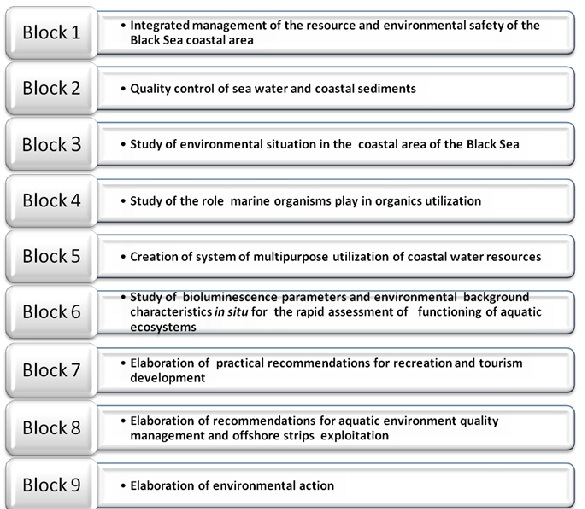
Fig. 1. Block diagram of a new approach to the environmental assessment in the system of integrated management of the resource and environmental safety of the coastal area of the Black Sea.
The dynamic study of the water layer bioluminescence characteristics is of vital importance for revealing a common pattern of functioning of plankton communities, as well as the reasons for their space-time variability [2]. The planktonic bioluminescence parameters can serve as a sensitive express-indicator of the degree of plankton resistance to pollutant exposure and as an expressive indicator of regional marine pollution [4].
The method is based on instrumental measurements in situ in a real time scale (vertical depth probing) of bioluminescent intensity, as well as on its spatial conjunction and correlation ratios with biological and hydrophysical characteristics of water masses.
Bioluminescent potential is an amount of light energy which can be emitted by the aggregate of organisms placed into a definite water volume or distributed on a definite area of the sea-bed during their saturating excitation by external irritants. The bioluminescent potential realization is a bioluminescence field [1]. A bioluminescence field is a total lighting effect created by the aggregate of marine bioluminescent organisms in the water layer [2, 4].
The primary role in creating a bioluminescent potential of the sea belongs to planktonic organisms [2, 4].
The bioluminescent potential in the Black Sea is formed by thirty six algae belonging to the Class Dinophyceae of the genera Neoceratium, Protoperidinium, Scrippsiella, Gonyaulacaceae, Noctilucaceae, Lingulodinium, as well as by three species of comb-bearers, some species of Copepoda and two genera of luminescent bacteria [2, 4]. The light-emitting properties of thirty 30 algae belonging to the Class Dinophyceae have been determined instrumentally under conditions of the Black Sea by the employees of the Biophysical Ecology Department of the A.O. Kovalevskiy Marine Biological Investigations Institute [2, 4].
The bioluminescence field (BF) in the Black Sea exists everywhere over the entire circadian period in essential regional and seasonal diversity. Fig. 2 shows a small-scale spatial inhomogeneity of the bioluminescence field in the seashore of Sevastopol (September).
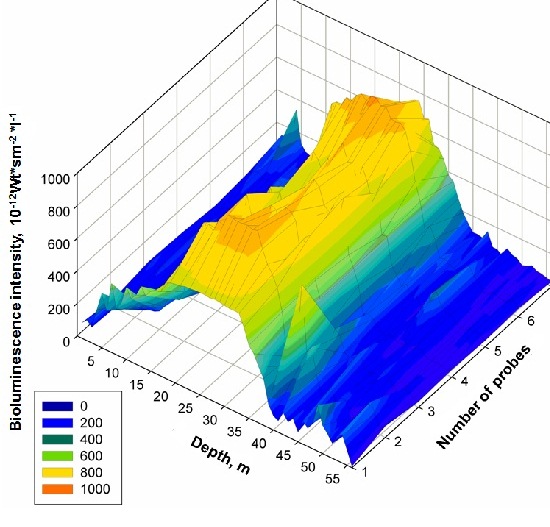
Fig. 2. Small-scale spatial inhomogeneity of the bioluminescence field in the seashore of Sevastopol (September)
When analyzing BF vertical intensity profiles of the open and closed areas of sea we found out that there are two BF highly intensive areas, the seasonal processes in which pass according to different consistent patterns (Fig. 3). In general, common features of the annual BF intensity dynamics are preserved in the surface layers of the investigated region.
Seasonal changes in bioluminescence field (BF) intensity have been analyzed. The seasonal changes in bioluminescence field (BF) intensity in the surface layer of different areas inside the Sevastopol Bay are characterized by rather high contingency, which is confirmed by a high paired correlation coefficient r = 0.83. The contingency of BF seasonal variation in the surface layer of open and closed areas of sea, on the contrary, are characterized by the average correlation relationship level (r = 0.56 – 0.63), which can give evidence, in particular, of different ecological state of the given regions [2].
The seasonal variation in the BF vertical structure in the surface layers of neritic area differs essentially from that in the deep-sea layers. The maximum BF intensity in the surface layer of the near-shore waters of Sevastopol was registered in autumn period (September-October). The maximum BF intensity in the deep-sea layer was registered in the open area of sea at depths located under thermal layer. BF intensity in the near bottom layer of the Sevastopol Bay in this period is about one – two orders lower than in the open water area [2]. The correlation relationship in the upper ten-meter layer between the bioluminescence field intensity and temperature (correlation coefficient r = -0,61), as well as the correlation relationship between the bioluminescence field intensity and salinity (r = 0,60) was obtained for the open water area (st. No 1, the beam of Kruglaya Bay) after the analysis and statistical data processing [2]. (Fig.4).
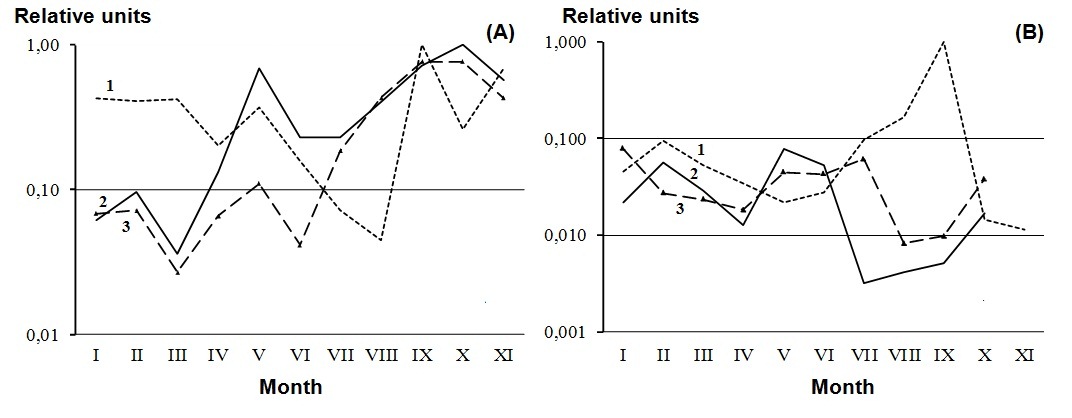
Fig. 3 Seasonal changes of BF intensity in the surface layer (А) and near bottom (deep-sea) layer (B) averaged and normalized by maximum annual value: 1 – at the st. 1(open area of sea); 2 – at the st. 2; 3 – at the st. 3 (closed area of sea).
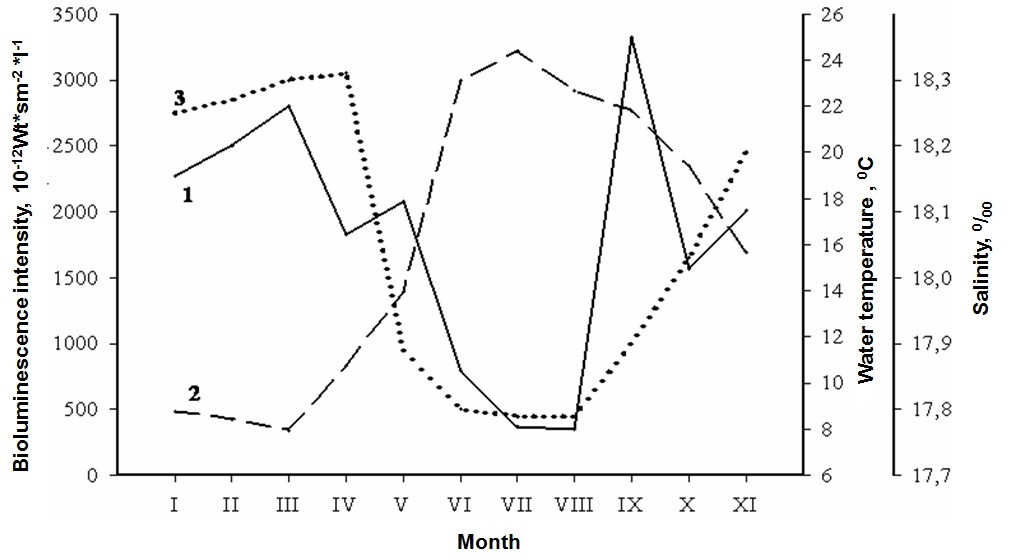
Fig. 4 Seasonal variations in bioluminescence field intensity (1), temperature (2) and salinity (3) in the surface water layer at the st.1 (open area of sea).
Two layers with different dynamics of bioluminescence field intensity have been discovered in the neritic area of the Black Sea during hours of darkness by cluster analysis method [2] (Fig. 5).
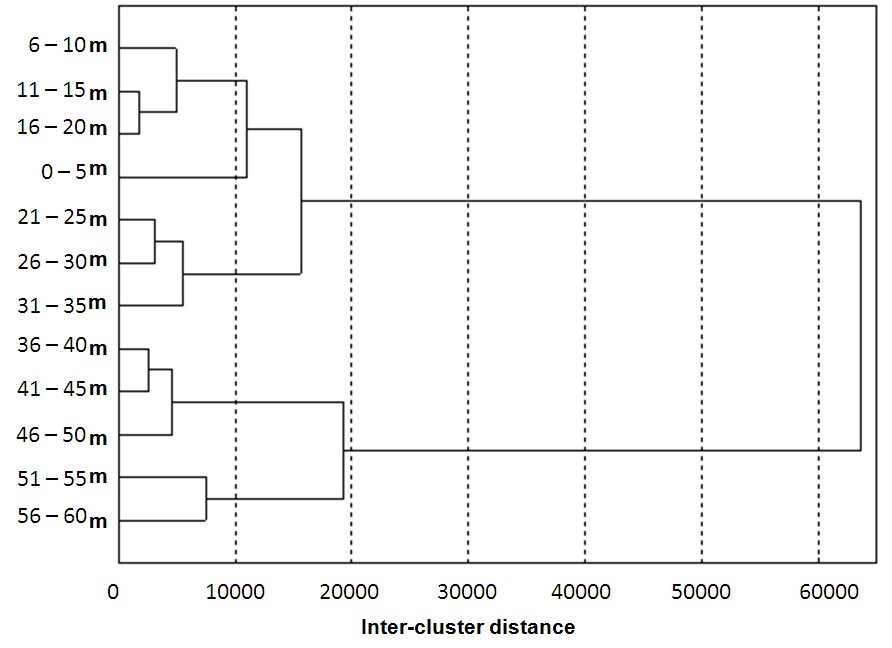
Fig. 5 Dendrogram of water layer clusterization and inter-cluster distances.
The bioluminescence field within the depths of 0 – 35 m is characterized by intensity peaks (at 7 pm, 11-12 pm, 3 am) and drops in intensity (at 8 pm, 1 am and 5-6 am) [2] (Fig. 6).
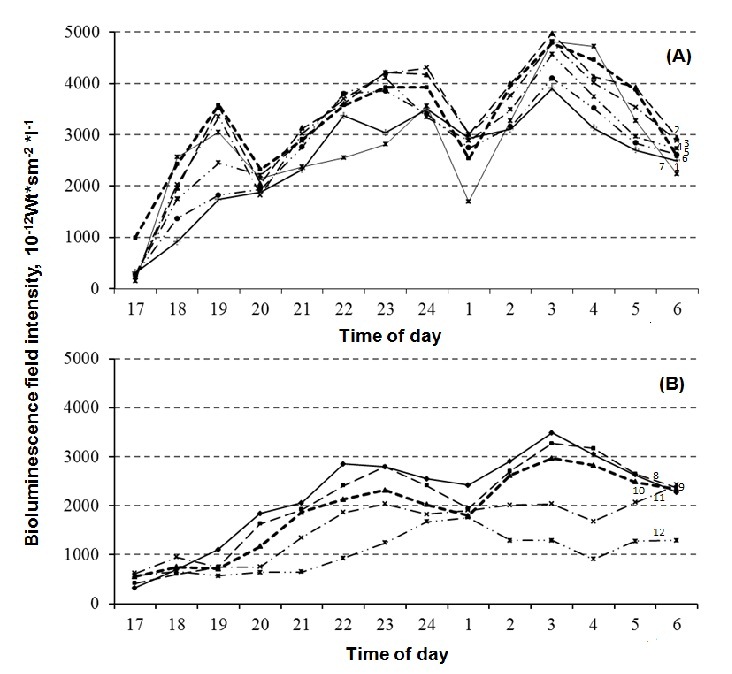
Fig. 6 Diurnal variations in BF intensity: А – in the upper layer: 1–0-5 m; 2–5-10 m; 3–10-15 m; 4–15-20 m; 5–20-25 m; 6–25-30 m; 7–30-35 m; B – in the deep-sea layer: 8–35-40 m; 9–40-45 m; 10–45-50 m; 11–50-55 m; 12–55-60 m
The methods of factor analysis show that the changes in BF intensity during hours of darkness can be described by three factors explaining 96,3% of total BF variance. It was shown that the basic factors determining the BF variability during hours of darkness are the cell division intensity of luminescent plankton and its grazing by zooplanktonic organisms [2].
The harmonic components of the change in BF intensity in coastal waters during hours of darkness were marked out and their gain-phase characteristics were calculated. It was shown that the 14-hour periodicity of variations of light produced by bioluminescent organisms related to the changes in illumination, and variations with 2,5…4,5 hours were conditioned by endogenous circadian rhythms of ethological nature [2].
The circadian dynamics of the BF parameters in the Black Sea gives evidence of the prevailing contribution of biotic factors (83,7 %) to its variability, the abiotic factors’ contribution is 12,6 % [2].
Conclusions
The results of studying seasonal and circadian dynamics of the bioluminescence field parameters can be used for the express-methods of marine ecosystem functioning assessment.
The forecast of the nearshore ecosystem development, its protection against adverse natural and anthropogenic processes are the most important tasks during the coastal development. The execution of the present work will make it possible to realize an integrated approach to solving problems of using Crimean coastal zones and to outline the ways to develop the promising directions of coastal management in the Russian Federation and to bring them closer to the international level.
Acknowledgment
The authors express gratitude and appreciation to Professor Mironov Oleg Glebovich, Doctor of Biological Sciences and to Professor Tokarev Yuri Nikolayevich, Doctor of Biological Sciences for their valuable scientific advice and commentaries, consultations when developing new hypotheses and for their pretentions to their approbation.
1. Gitelzon I.I. Bioluminescent Field of Ocean. / I. I. Gitelzon, L.A Levin, A. P. Shevyrnogov et al. / Abstracts of the IV International Congress “The Weak and Ultraweak Fields and Radiation in Biology and Medicine” - www.biophvs.ru/archive/consress2006/abs-p 109.pdf (In Russian)
2. Lyamina, N. V. Dynamics of Parameters of Bioluminescence Field in the Black Sea and Their Association with Environmental Factors: Ph.D. Thesis in Biological Science: Speciality 03.02.10 “Hydrobiology” / Natalya Viktorovna Lyamina. - Sevastopol, 2014. - 133 p. (In Russian).
3. Rubtsov S.I. Environmental Aspects of the Integrated Management of the Coastal Zone of Crimea. - Sevastopol: ECOSI-Hydrophysics, 2013. - 200 p. (In Russian).
4. Tokarev Yu. N. Fundamentals of Biophysical Ecology of Aquatic Organisms / Yuriy Nikolayevich Tokarev - Sevastopol: ECOS-Hydrophysics, 2006. - 342 p. (In Russian).







